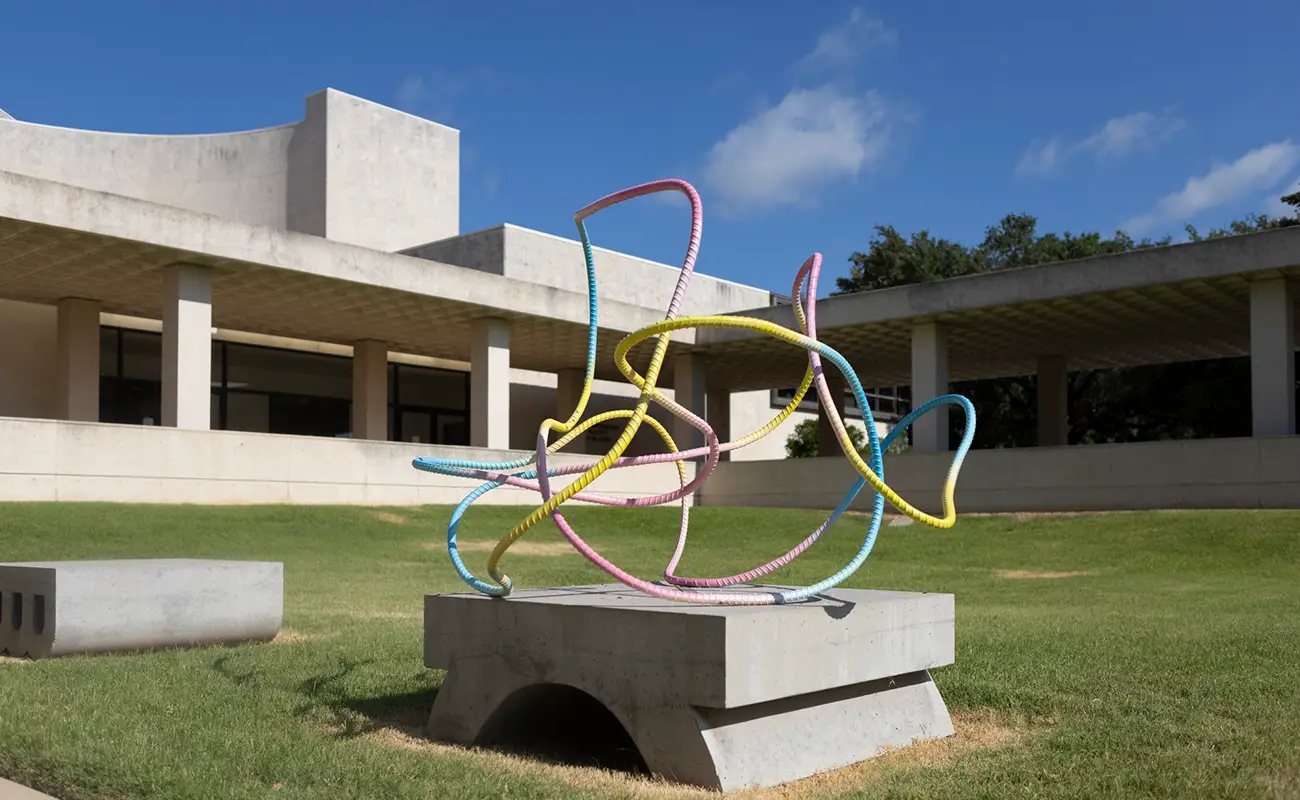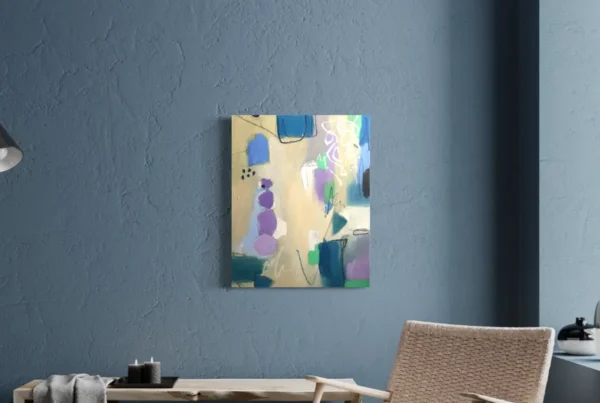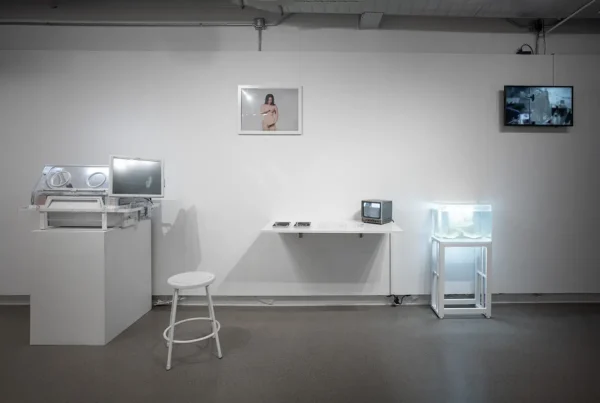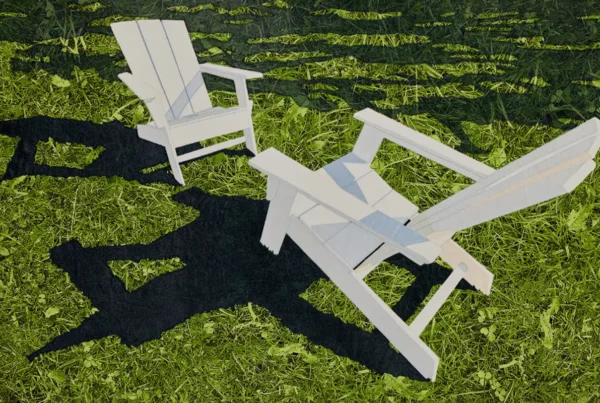“A lot of my making process is trying to create a ‘new’ vocabulary, outside of the words, systems, and structures we are handed to operate within.”
Unsettling Beauty: The Artist’s Early Encounters with Aesthetic Complexity
The visual language of Molly Valentine Dierks is shaped not only by the materials she chooses but also by the sensory intensity of her upbringing. Raised in a home where artistry permeated daily life, Dierks was steeped in the handmade and the extraordinary from a young age. Her mother, an artist herself, cultivated an environment rich with tactile rituals and aesthetic nuance: homemade bread, antique furniture, and handmade holiday ornaments all played formative roles. Her parents’ time spent living abroad in Ethiopia and traveling extensively further deepened this early exposure to global design traditions. Japanese aesthetics, with their embrace of asymmetry, natural imperfection, and quiet beauty, left a particularly strong imprint. This cultural influence threads its way through Dierks’ current work, often surfacing in subtle distortions and organic structures that value irregularity over precision.
As a child who preferred fiction to television, Dierks developed a robust inner world where words and images collided to create complex emotional spaces. Her early passion for literature still pulses through her art practice today. Titles of works and thematic directions frequently emerge from the nuanced, almost ineffable sensations evoked by poetry and narrative fiction. Fiction provides her with a conceptual scaffolding—a way to articulate emotions and ideas that exist outside of conventional language. This literary inclination functions as a kind of catalyst, inspiring works that are visually evocative yet speak to experiences that resist verbal explanation. Dierks’ work, then, is not just visual but emotive, gesturing toward moments of feeling too complex or ambiguous to reduce to simple form or phrase.
Her trajectory into the professional art world was neither straight nor effortless. Initially earning a degree in psychology, Dierks approached that path as a pragmatic counterbalance to her innate creativity. But she quickly discovered that conventional employment sapped her spirit rather than sustained it. Turning instead to arts education as an adult, she funded her own post-baccalaureate and MFA studies, determined to carve out a future more aligned with her sensibilities. These years were formative not only in skill-building but also in defining the philosophical questions that underpin her artistic process. She describes her work as a counterpoint to the rigid binaries and reductive systems that structure much of contemporary life, with the studio becoming a space of resistance—a domain where contradiction, nuance, and emotional ambiguity are permitted and even prioritized.
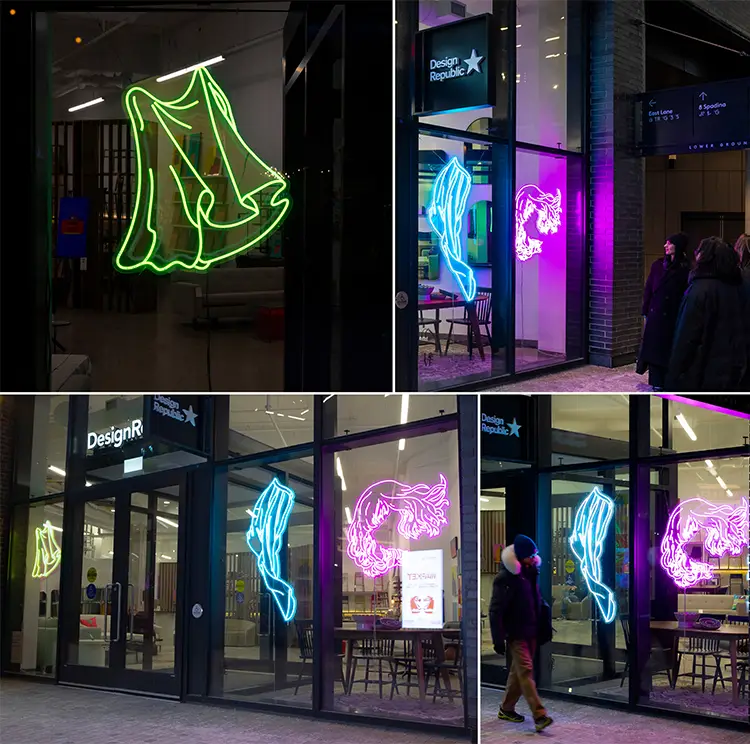
Molly Valentine Dierks: Between Alienation and Desire
Dierks’ work exists at the juncture of seduction and estrangement, creating visual narratives that oscillate between intimacy and detachment. Her chosen materials and colors serve as both invitation and warning. Pastels—her signature palette—carry multiple connotations, spanning from childhood innocence to erotic artifice, from medical sterilization to cultural kitsch. These soft, seemingly innocuous hues speak to the American obsession with clarity and simplicity, yet Dierks uses them to unsettle rather than soothe. For her, pastels function as a visual metaphor for unresolved human emotions—simultaneously appealing and disconcerting. They challenge traditional associations, blending nostalgia with critique and visual pleasure with conceptual unease.
The artist is particularly attuned to the psychological conditions of modern life. Themes of isolation, longing, and technological mediation recur throughout her installations. She explores how our increasing reliance on digital interaction exacerbates a core human tension: the simultaneous desire for closeness and the fear of vulnerability. Her work often reflects this paradox, echoing the way we project ourselves into networks and screens, while pulling back into curated solitude. Dierks captures the strange emptiness of consumer culture’s promises—the seductive allure of things that ultimately fail to satisfy. These observations are not detached critiques but expressions of personal resonance, as her own life has been shaped by the same dissonances she explores in her art.
Underlying much of Dierks’ output is a nuanced take on the ongoing negotiation between the natural and the artificial. The entwinement of these domains is not presented as a binary or a battle but as a complex dance of influence and friction. Her installations often fuse organic forms with industrial materials, allowing viewers to witness how the synthetic and the biological converge. She invites her audience to consider how even nature, in its wildness, is subject to human desire and interpretation. The resulting works do not offer conclusions but linger in the charged space of ambiguity—where beauty is tinged with discomfort and where seduction carries the shadow of loss.
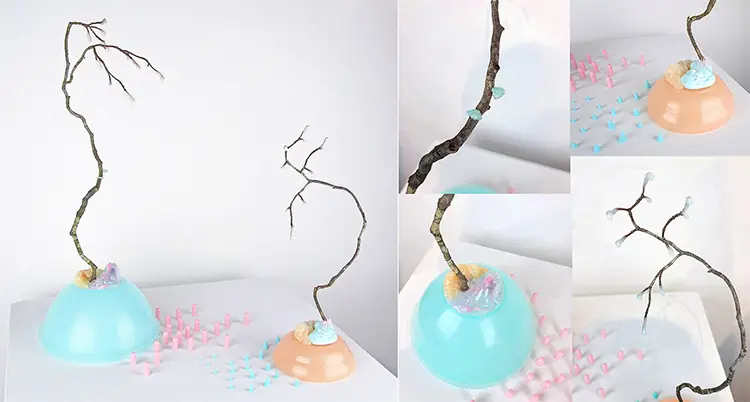
Of Noise, Stillness, and the Space Between
The environment in which Dierks creates is as considered and deliberate as the pieces she produces. As someone with ADHD and sensory sensitivity, she has cultivated specific strategies to manage the overwhelming stimuli of daily life. Earplugs, light-filtering glasses, and a highly structured yet flexible schedule are essential to her creative productivity. While public environments can be depleting, her studio offers refuge—a curated space of quietude and focus. Dierks prefers natural light and an uncluttered yet adaptable atmosphere that mirrors the rhythm of her internal processes. These environmental parameters are not mere preferences but necessities, enabling her to channel sensory input into creative expression rather than allowing it to become a source of distraction.
Time is a crucial factor in her creative practice. Large, uninterrupted blocks allow for deeper immersion into the making process, and her position within a university provides her with the temporal space she needs. Dierks is acutely aware of the cognitive demands of switching between roles, especially when teaching intersects with studio work. She has found that projects rooted in digital or computer-aided design are more manageable during periods of divided attention, while more tactile, hands-on work requires extended solitude. This awareness has allowed her to adapt her practice fluidly, without sacrificing depth or integrity. Her workspace must, in essence, mirror the emotional and psychological landscapes her work explores—structured yet open, protected yet porous.
In addition to environmental control, Dierks draws heavily on an eclectic and interdisciplinary network of influences. She cites artists such as Nick Cave, Janine Antoni, and Haruka Kojin as key inspirations, but her creative inputs extend far beyond the visual arts. Fiction writers like Kazuo Ishiguro and Margaret Atwood, choreographers like Marie Chouinard, and fashion visionaries including Alexander McQueen and Iris Van Herpen all inform her aesthetic and conceptual thinking. Television programs such as Project Runway have also played a surprisingly powerful role in shaping her understanding of material innovation and formal exploration. This broad and dynamic reference base energizes her practice, allowing her to cross-pollinate ideas and generate work that resists easy categorization.
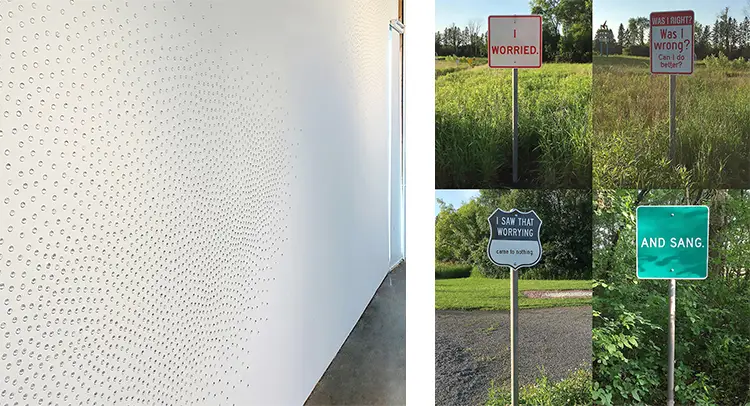
Molly Valentine Dierks: Material Memory and Dream Projects in Suspension
Among her expansive body of work, one piece holds particularly intimate significance: For The Birds, who Own Nothing (… the reason they can fly). Installed at the Czong Institute for Contemporary Art, the project featured over 14,000 transparent hemispherical furniture pads arranged across five walls. The result was an ethereal surface resembling dew drops, creating a sensation of delicacy and movement across 35 feet of space. The piece was conceived during a transitional period in Dierks’ life, marked by professional uncertainty and personal loss. Its title, drawn from a poem by Mary Oliver, spoke to the emotional act of release—letting go of the tangible and intangible weights we carry. The imagery of birds, borrowed both from the poem and her mother’s lifelong interest in avian forms, contributed a spiritual undertone to the work. It became a meditation on freedom, fragility, and impermanence, realized through the repetition of a simple yet powerful form.
This blending of material clarity with emotional ambiguity continues in her current aspirations. One of her dream projects recently came to life in the form of a large-scale video projection in downtown Denver, where starling murmurations danced across a 33-story building. The hypnotic movements of the birds, magnified on an urban canvas, embodied many of the themes Dierks holds dear: motion, collective desire, and ephemeral beauty. Yet, even with such achievements, her artistic imagination remains forward-facing. She is now developing a project that will utilize over 200 lunaria leaves—delicate, translucent discs resembling pearls or seeds—to create a suspended installation. Though the piece has no confirmed exhibition space, Dierks is confident the right venue will emerge. Her approach to material and opportunity is marked by openness rather than control, trusting that the work itself will find its rightful place in time.
Medium is never static in Dierks’ practice; it shifts according to need, space, and the nature of the idea at hand. She moves seamlessly from found objects and organic materials to industrial design languages involving rebar, vinyl, and even street signage. This fluidity not only keeps her work fresh but also allows her to respond to the logistical challenges of academic life and frequent relocation. Sometimes a piece waits years before it becomes physically possible. She describes these moments of fruition as “portals”—unplanned but perfectly timed alignments between concept and circumstance. Whether projecting flocks of birds onto skyscrapers or sculpting reflective materials into immersive sanctuaries, Dierks continues to pursue a vision of art as both an emotional inquiry and a sensual experience, suspended always between what is known and what remains just out of reach.



